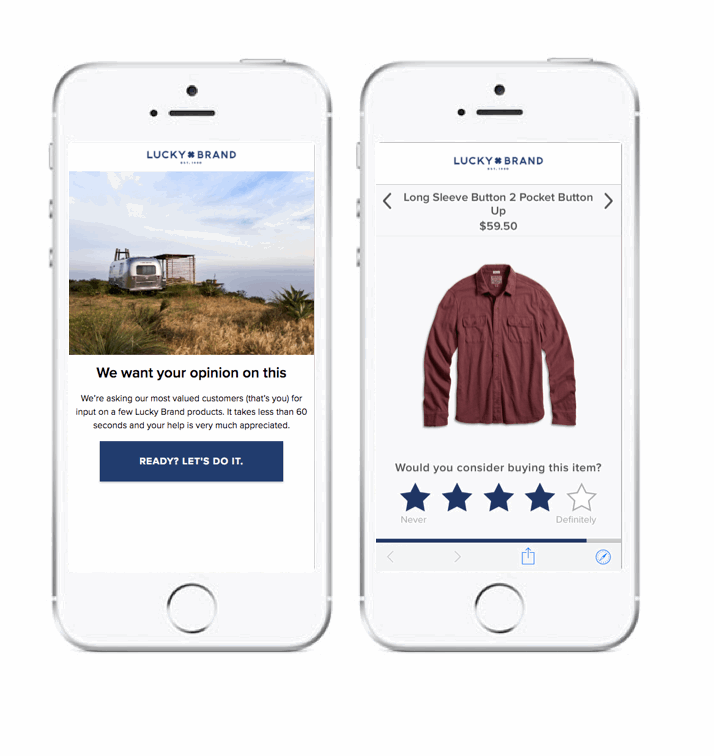The Importance Of Running A Customer-Centric Business

By Matthew Field, co-founder, MakerSights
The power dynamics between retailers and customers have fundamentally shifted. For decades, customers bought what brands and retailers were selling with unquestioned eagerness. They were inspired by the displays at their favorite stores and by magazines and catalogs that came in the mail. Today, the sources of influence have expanded to include celebrities, influencers, friends, and even other customers that look and feel like them.
Customers have many more choices and are informed, decisive, and empowered. Their expectations have changed; speed, relevance, transparency, and authenticity are the new focus. Successful companies will embrace these changes and leverage this savvy customer. By engaging customers and creating an open dialogue that involves listening, adapting, and communicating, brands can unlock invaluable benefits including loyalty, customer engagement, increased lifetime value, a network of advocates, and creating brand ambassadors at scale.
What Customers Care About
A Bain & Co study suggests millennials and gen-Z will account for 45 percent of luxury consumers by 2025 and will boost the value of the luxury goods market to $324 billion. However, it also warned the younger generations’ values and spending habits are at odds with the traditional business models of many luxury brands. As stated in Business of Fashion, “In the past, a luxury brand’s goal was to create a superior product that encapsulated ideals of exclusivity and aspiration. Now, brands must consider the values of younger generations, for whom community, authenticity and transparency play an important part in how they purchase luxury goods.”
Competition for customer attention is more severe than ever before. To stand out you have to represent something meaningful to your customer, whether uniqueness through identity, a social conscious story, a radical pricing strategy, or your ability to create products that inherently fit with that customer’s world-view or aesthetic. For example, San Francisco-based Cuyana is founded on the principle of “fewer better things,” a globally-minded stance that speaks to quality and uniqueness and has resonated with its young, consumption-conscious customer.
Transparency in the product development lifecycle is a key component of building trust and loyalty. Customers have high expectations on transparency into where their clothes are made, what the prices are, what the quality is, as well as whether or not their friends like it. Everlane, as an example, has been very successful with its radical transparency around pricing, sharing every step of the product development cycle and the costs incurred.
Retailers must listen and adapt. The scales have tipped, and the customer is in charge.
How To Be More Customer-Centric
The good news is these informed, globally-minded customers want to engage. Research from Media Post found 81 percent of millennials want to co-create with brands they love.
 Unfortunately, most retailers are still in the process of reacting to this new reality. As a result, over 50 percent of new products fail once they reach market, according to sources like Gartner, and over two-thirds of marketing emails contain some sort of promotion in an effort to move excess inventory.
Unfortunately, most retailers are still in the process of reacting to this new reality. As a result, over 50 percent of new products fail once they reach market, according to sources like Gartner, and over two-thirds of marketing emails contain some sort of promotion in an effort to move excess inventory.
There are certainly many success stories: Major retailers Nike and Lululemon have had success with initiatives like NikeiD, where customers can create their own shoes and accessories, and Lululemon Lab, a design space that concepts and develops focused collections specific to the city it’s located in. But how can more companies systematically incorporate this customer-centric mindset throughout their organization? This is what a customer-first organization looks like:
- Reach out to customers: Ask for feedback on new introductions, have them participate in your creative process, and create narrow, curated assortments focused on the tried and true adage of “the right product at the right time at the right price in the right location.”
- Create easy, relevant experiences: People are busy. Engendering loyalty is about more than a transaction — it’s about experiences and convenience. Make it frictionless, delightful, and engaging for a customer to interact with your brand, from a responsive website that’s easy to navigate to emails that are personalized and targeted to your audiences.
- Think omni always: Engage the customer online, in store, on social media, in print — all with the same clear consistent message. Customers expect to be able to research, browse, and buy what they want, when they want it, and where they want it.
- Be friendly to new customers: Make returns easy. Customers must have confidence they can try new items and brands without a major headache or fees if it doesn’t work out. Zappos and Nordstrom continue to be leading examples of customer-friendly return policies — fast and easy.
- Be an open book: Readily share your story and practices. This should be done in a customer friendly fashion, not “industry speak.”
- Create a dialog: Ask for feedback on how you’re doing, and then act on it. Soliciting feedback should be dynamic and value-additive, not static and generic. Ask what’s important to your customers, then have clear processes in place for how you will integrate and act on this advice.
The Benefits
Using technology to facilitate a dialogue between brands and their customers is the key to evolving retail in the age of the customer. By lifting the veil and inviting consumers into the product development process, brands get direct access to the opinions and preferences of their own customers — critical inputs for making more confident and profitable decisions. The result? Healthier margins and happier customers.
Here are a few things we’ve learned about the positives of embracing customer-centricity in today’s retail environment:
- As it turns out, customers know what they want. We’ve seen customers correctly identify brands’ winning and losing products roughly 90 percent of the time.
- Customers like being asked their opinion … as long as the conversation is quick and engaging. Over 95 percent of customers tell us they are interested in regularly sharing thoughts with their favorite brands.
- Brands drive real sales by inviting customers to partake in the product development process. A key benefit of gathering this feedback is brands can use it to present customers with their favorite styles once products reach market. By re-targeting individuals based on their stated product interests, we’ve seen up to a five-time lift in conversion rate.
The technology exists, the customers are willing. Let’s get started!
About The Author
Matt Field is president and cofounder of product intelligence platform, MakerSights, which helps brands like Ralph Lauren, Lucky Brand, Taylor Stitch, Sperry, Merrell, MM.LaFleur, True Religion, and Rhone develop sales plans, de-risk new product introductions, and measure how customers respond to product attributes like fabrics, colors, and price. Matt was previously VP of Strategy and the first non-founding employee at Birchbox where he ran consumer insights before heading up the company’s global strategy and the international business units. Previously, Matt worked at Bain & Company, advising Fortune 500 consumer product and technology companies. Matt holds a BA from Princeton and is an AMEX digital board member.
